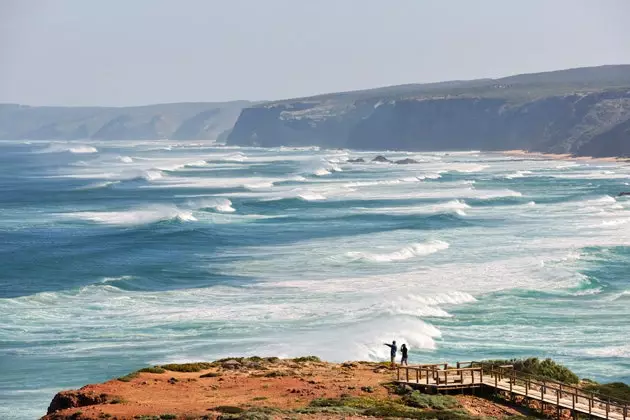
Carrapateira viewpoint: Stendhal syndrome
ALVAO NATURAL PARK
It is a small garden compared to other reserves in the country, but the 70 square kilometers of the Alvão Natural Park give unique postcards that justify its creation back in 1983. Two very marked profiles divide the park in half, with a mountainous area , full of ravines and gorges, and another cleft in its valleys , with forests of birches, oaks and heathers. the river olo it draws its main artery, while it distributes streams and rapids in its path.
Among its tenants: wolves, wildcats and peregrine falcons , which are just an appetizer for lovers of Iberian fauna, who will be able to spy on the golden eagles , in danger of extinction. The other main course of the park are the waterfalls, and those of Fisgas do Ermelo They are the most famous, with crystalline lagoons at their source and such a long course that they are considered one of the largest in Europe. Prepare your foray into it at Vila Real , where one of the park's information and interpretation centers is located.
INTERNATIONAL NATURAL PARK OF DOURO
Shared with Spain, the Duero river marks in its course the border that divides the Iberian Peninsula . Its waters have carved for thousands of years the profile that the Duero Natural Park is now wearing, with banks that extend in the Portuguese part between Miranda do Douro and Barca d´Alva . The sum of the two Iberian parks dedicated to the Duero make up one of the largest in Europe. Endemic juniper forests, cork oaks, oaks and holm oaks grow on a path where the vines rule. Cradle of some of the best Portuguese wines , there are many wine circuits that can be done in it. Inside, the Côa Archaeological Park It gives an account of the human presence in the area for thousands of years, with its exceptional Paleolithic engravings. The origins of a land with history.
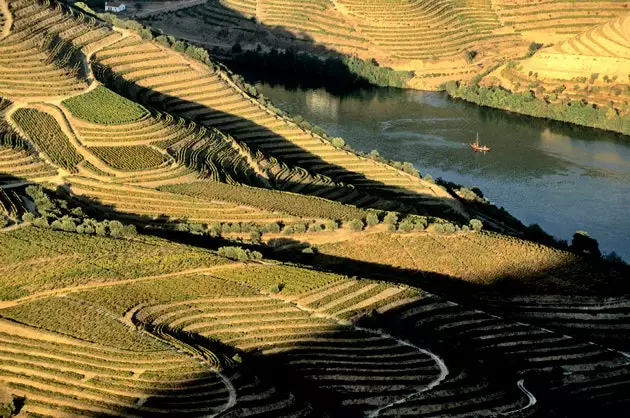
Vineyards on the banks of the Duero
SIERRA DE LA ESTRELLA NATURAL PARK
The cover letter of Sierra de la Estrella Natural Park is dotted with records. The reserve, the largest in the country , delimits the highest mountain range in continental Portugal, with the Torre peak as king of the landscape with its 1,995 meters; It has the highest percentage of rainfall in the area and it is not unusual to see snow at its highest levels in the middle of summer. This extreme climate, heir to a glacial past, makes its profile full of plant and animal life, with endemic species that make it a charming natural rarity. There are not a few routes designed to discover its natural secrets, among which you should not miss the Penhas da Saúde or the Well of Hell . Within its domains there are not a few towns that you should drop by, like the pretty ones Guarda, Covilhã and Linhares.
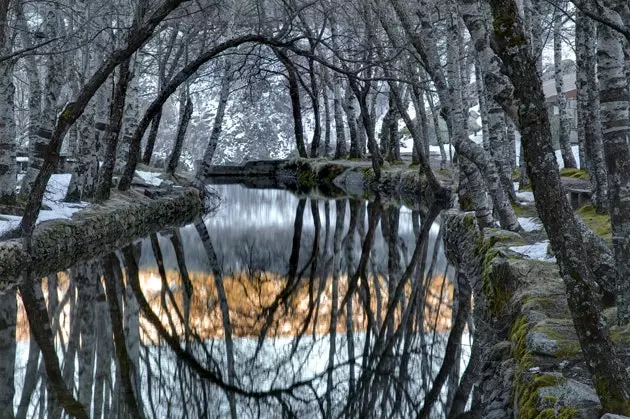
Serra da Estrela
SIERRA DE AIR AND CANDEEIROS NATURAL PARK
It seems that this was already a park millions of years ago, and this is attested by the footprints of dinosaurs that can be seen and touched in the limits of the Sierra de Aire, a hundred footprints that were discovered in 1994 and that have been there for 175 million years. Perhaps the best preserved in the world.
Today the Pedreira do Galinha deposit It is a national monument, and one of the great attractions of the Sierras de Aire and Candeeiros Natural Park . But there are more natural wonders in this park, with hundreds of cave s on the surface and many others in the subsoil, formed by the action of underground currents, it may be that the largest reserve of salt water in the country s, in the limestone, curdling with stalactites and stalagmites each one of them. Up to twenty-five species of orchids decorate the profile of the park , transited by all kinds of reptiles, birds, mammals and invertebrates.
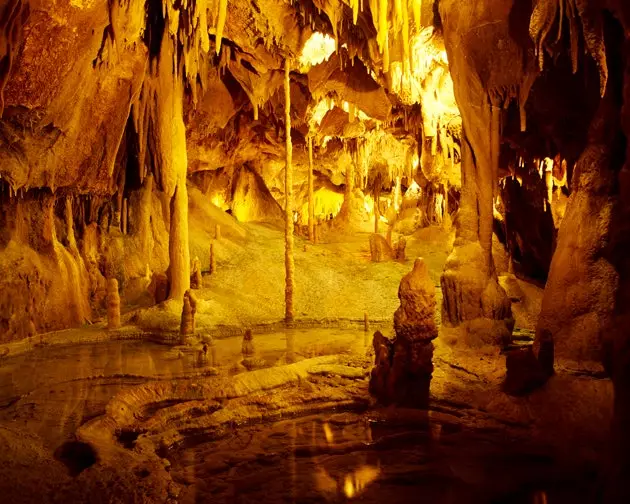
Caves in Candeeiros
SINTRA-CASCAIS NATURAL PARK
A wild coastline and an extensive mountain range are the two faces shown by the **Sintra-Cascais Natural Park**, so close to Lisbon that it is hard to believe that nature is still intact at this point on the Portuguese map. Forests of oak-cerquiños, poplars or acacias, green covers everything . On the mountains stands the beautiful Sintra, which Lord Byron said was the most beautiful place in the world.
Palaces and gardens mix between the vegetation and the fog, in an almost magical landscape that curdles the land with viewpoints: the Palacio da Pena or the Castelo dos Mouros, in an enclave declared a cultural landscape by UNESCO. From them the views on clear days extend to the coast, where the Cabos Raso and Da Roca mark the boundaries of the park. **Kleometric beaches such as Guincho **, a mecca for windsurfers, and cliffs where the wind and waves rule, creating legends such as those of the Hellmouth wave ursa beach, These are just some of the charms of this land, which invites you to explore the park without haste, in a circuit in which the Atlantic is the only guide.
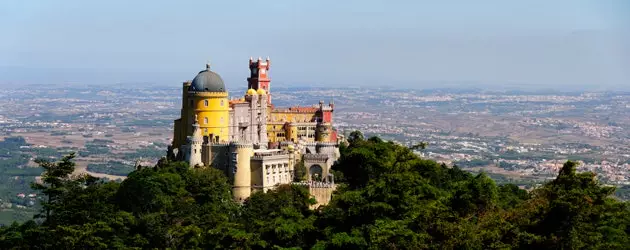
Pena Palace
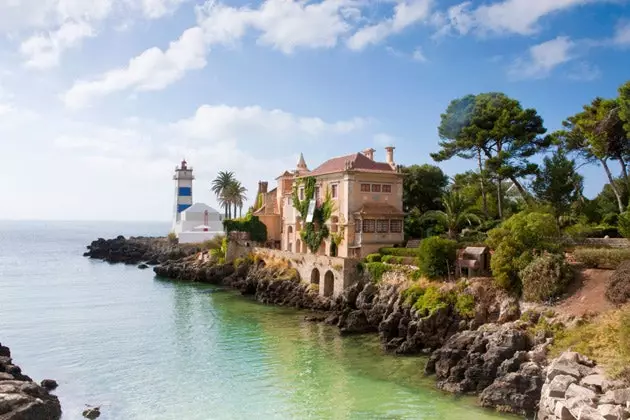
Cascais: close and well
GARDENS OF THE NATIONAL PALACE OF QUELUZ, SINTRA
Example to follow at the very moment of its creation, the garden of the National Palace of Queluz used French sophistication and Italian theatrics to create what may be one of the most beautiful gardens in the country. Two monumental fountains, one dedicated to Tethys and the other to Poseidon , center the sculptural decoration of the complex, which explodes in dozens of marble figures, an army of gods and sphinxes, located in flowerbeds and hedges.
The uniqueness of Queluz lies in the combination of styles , in a layout that recalls the hand of Le Nôtre, architect of the gardens of Versailles, and the symmetry of the Italian Renaissance. The unmistakable Portuguese stamp put it the tiles that decorate the large pond and some of the walls that limit this green paradise . Exotic plants brought from the colonies, laurels and lemon trees put the olfactory notes in this garden that lives attached to artificial water features in the most unexpected places. A stone's throw from Lisbon, it can be visited on a round trip, the perfect antidote to the hustle and bustle of the city.
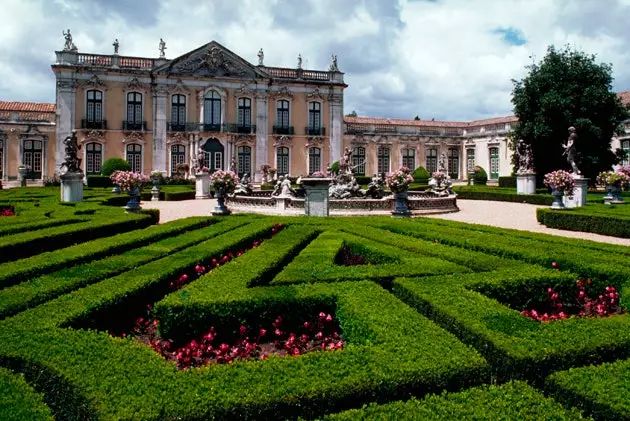
National Palace of Queluz
ESTRÊLA GARDENS, LISBON
You can find part of the tropics in the heart of Lisbon. Estrela Gardens , right in front of the basilica of the same name, have a great variety of tropical plants, natural wonders brought from the four cardinal points of the globe. In the newly created 19th century, it is said that on the path of the stars there was a Chinese pavilion, greenhouses and even a caged lion . In the summer months, music fills its four hectares, with musical groups in its large wrought iron kiosk . The people of Lisbon choose its paths to disconnect from the hustle and bustle of the city and have a delicious coffee in one of its picturesque floating cafes or enjoy a picnic in the shade of one of its ancient trees.
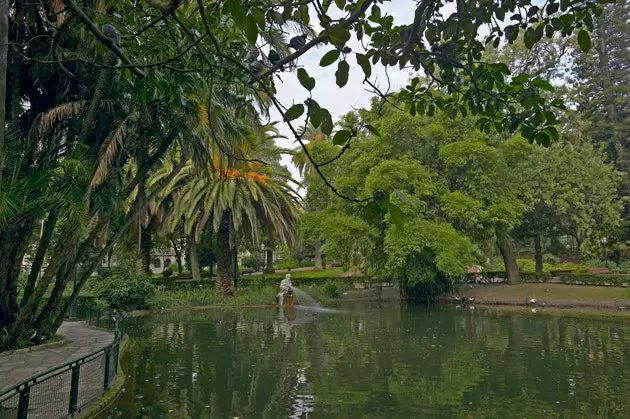
Jardines da Estrêla, tropicalism in the heart of Lisbon
NATURAL PARK OF THE SOUTHWEST ALENTEJANO AND COSTA VICENTINA
Just hearing his name makes the fantasy take flight. fishing villages , zero kilometer gastronomy and a captivating landscape, the Alentejo becomes a natural paradise in the southwest when it embraces the Vicentine Coast in a gift set one of the best landscapes of the Portuguese coast.
The São Vicente cape reigns in this circuit that unites the riverside of São Torpes with Burgau beach . About 110 kilometers of almost wild sea horizons, dunes, kilometric beaches and small coves -in addition to an island, that of passegeiro , and a coral reef in Carrapateira - who steal the heart with all impudence. Fauna and flora accompany this Atlantic awakening in one of the westernmost points of the European continent. drop by the markets of the towns that dot the coast , and if it's in July when you decide to visit this paradise, don't forget to stop by Sines to enjoy its Musicas do Mundo Festival.
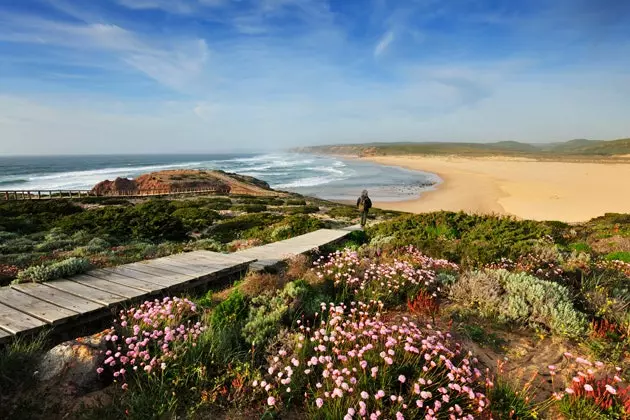
Carrapateira, on the Vicentine coast
MADEIRA NATURAL PARK
The laurel forests makes you think you've returned to the Tertiary, with its wriggling, rugged forms. Madeira's natural park It is in this sense a real time tunnel. But not only from laurel forest lives this island, rightly called the floating garden of the atlantic , but the park brings together seven nature reserves that occupy two thirds of the island and much of the rest of the archipelago. Rocha do Navio , the landscape of Porto Santo, the Ponta de São Lorenço, the Pico Ruivo or the desert islands, inhabited only by reptiles, or the wild ones are distributed to lovers of green, who come to Madeira in search of nature in its purest form. And that is precisely what they find.
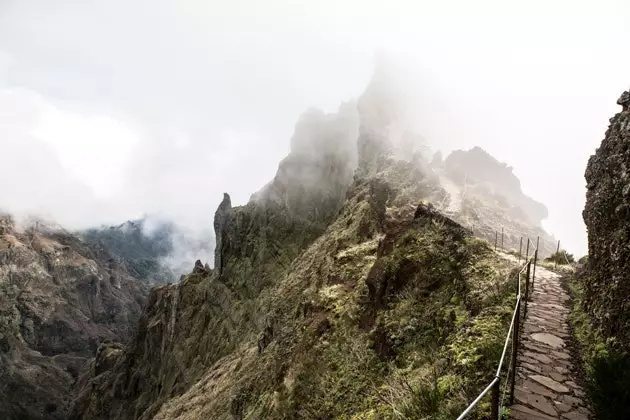
Pico Ruivo: not everything is going to be a beach in Madeira
VINEYARDS OF PICO ISLAND, AZORES
For centuries, man has modified the landscape that can be seen in the Pico Island, one of the island paradises of the Azores . Removing the volcanic stone and tilling the land until it becomes an arable field, where the grape has grown strong to become the Verdelho wine . The work of Franciscan and Carmelite friars erected overlooking the sea and under the watchful eye of the volcano peak , the roof of Portugal with 2,351 meters of height, a disjointed labyrinth of walls where the vines are protected from the wind and grow sweet in the heat of the sun. A chaotic, but unusually beautiful landscape which UNESCO has declared as a World Heritage Site. A unique environment in the world where you can toast while the sun goes down.
_ * This article was originally published by Condé Nast Traveler on the Visit Portugal website _
*** You may also be interested in...**
- Good morning, Serra da Estrela!
- Cascais, 10 times yes
- Surfing in Portugal: let yourself go with the flow
- Viewpoints of Portugal: best from above
- Ten reasons to return to Portugal in 2014
- All articles by Álvaro Anglada
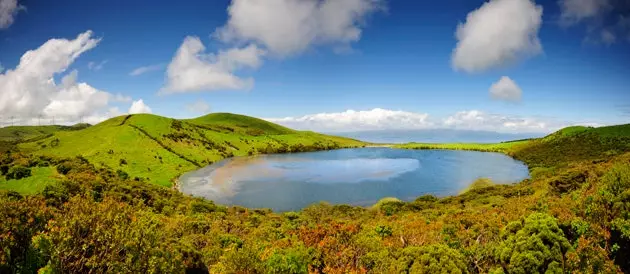
One of the dormant craters on Pico Island in the Azores
